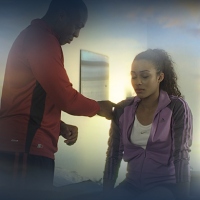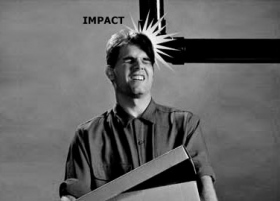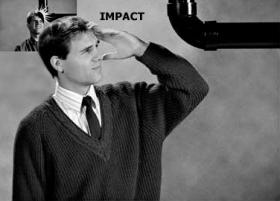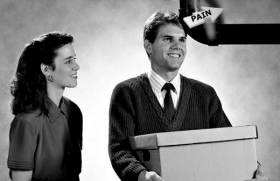There is a basic principle in
Theory
One of the basics of life’s reactions is to avoid places where one has been hurt. This is a survival factor but it is not analytical (based on rational thought). For example, if one ran into a table and injured himself, he would tend to avoid coming near that spot again. He would think he was avoiding the table, but actually he is avoiding the exact location of the accident. Even if the table were taken away, he would continue to avoid the location where he was injured. This is the basic reason for a Contact Assist.
When the exact spot of the accident or injury is available, always do a Contact Assist. It can be followed by other types of assists, but the Contact Assist should always be done first if the physical objects and location are available.
Procedure
- Remember that first aid and physical actions often have to be taken before a Contact Assist can be begun. First aid always comes first. Look over the situation from the standpoint of how much first aid is required, and when you have solved that situation, then
render the assist. An assist will not shut off a pumping artery, but atourniquet will. - Take the person to the exact spot where the accident occurred. If the object was hot, you let it cool first; if the current was on, you turn it off before doing the assist.
- Tell the person, “We are now going to do a Contact Assist.”
- Have the person get into the same position he was in before the accident happened. If he had a tool in his hand, or was using one, he should be going through the same motions with it.
- Tell the person to move slowly through the accident just like it happened. Have him
duplicate exactly what happened at the time of the injury by making him touch the exact spot with his injured body part. You have him gently touch the thing that hurt him. If he pricked his finger on a thorn in the rose garden, you get him to gently touch the same part of the same finger that was pricked to the same exact thorn. If he closed his hand in a door, you would have him go back and, with his injured hand, touch the exact spot on the same door, duplicating the same motions that occurred at the time of the injury. There are hardly any commands involved with it; the less you say, the better off you are. - Repeat this over and over again until the exact
somatic turns on and blows off—appears and then disappears. (In Scientology we use the word somatic to designate any body sensation, illness, pain or discomfort. Soma means “body” in Greek.)
In addition to the somatic blowing, the person will also have a realization about something: his injury or the circumstances related to how he got hurt or the environment. Such a realization is called a cognition.
You have to get him to touch the exact point to produce the exact phenomenon of the somatic blowing. When this occurs and he has a
Don’t Force the Person
A Contact Assist must sometimes be done on a
You must never forcibly drag the person up to the spot where the injury or accident occurred. If you try to force the person, you could overwhelm him which could have a bad effect on him.
Contact Assists can be done solo (by oneself) but one must be sure to do it until the somatic blows.
Any type of injury can and should be handled with a Contact Assist. It is always the best type of injury assist when the exact spot is available and should precede any other assist actions. Contact Assists have unlimited use. They’re sometimes miraculous—but they always help.
Scientology is a practical religion dealing with the study of knowledge, which through application of its technology can bring about desirable changes in the conditions of life. It was developed over a third of a century by L. Ron Hubbard. The term Scientology is taken from the Latin word scio (knowing, in the fullest meaning of the word) and the Greek word logos (study of). Scientology is further defined as the study and handling of the spirit in relationship to itself, universes and other life.
to do (a service) for another; give (as help) to another.
a strip of cloth tied tightly around an injured arm or leg to temporarily stop the flow of blood through a large artery, in order to prevent a heavy loss of blood.
a word used in Scientology to designate any body sensation, illness, pain or discomfort. Soma means “body” in Greek.
a new realization about life. It is a “What do you know, I . . .” statement; something a person suddenly understands or feels.
a gradual approach to something taken step by step, level by level, each step or level being, of itself, easily attainable—so that finally, complicated and difficult activities can be achieved with relative ease. The term gradient also applies to each of the steps taken in such an approach.





